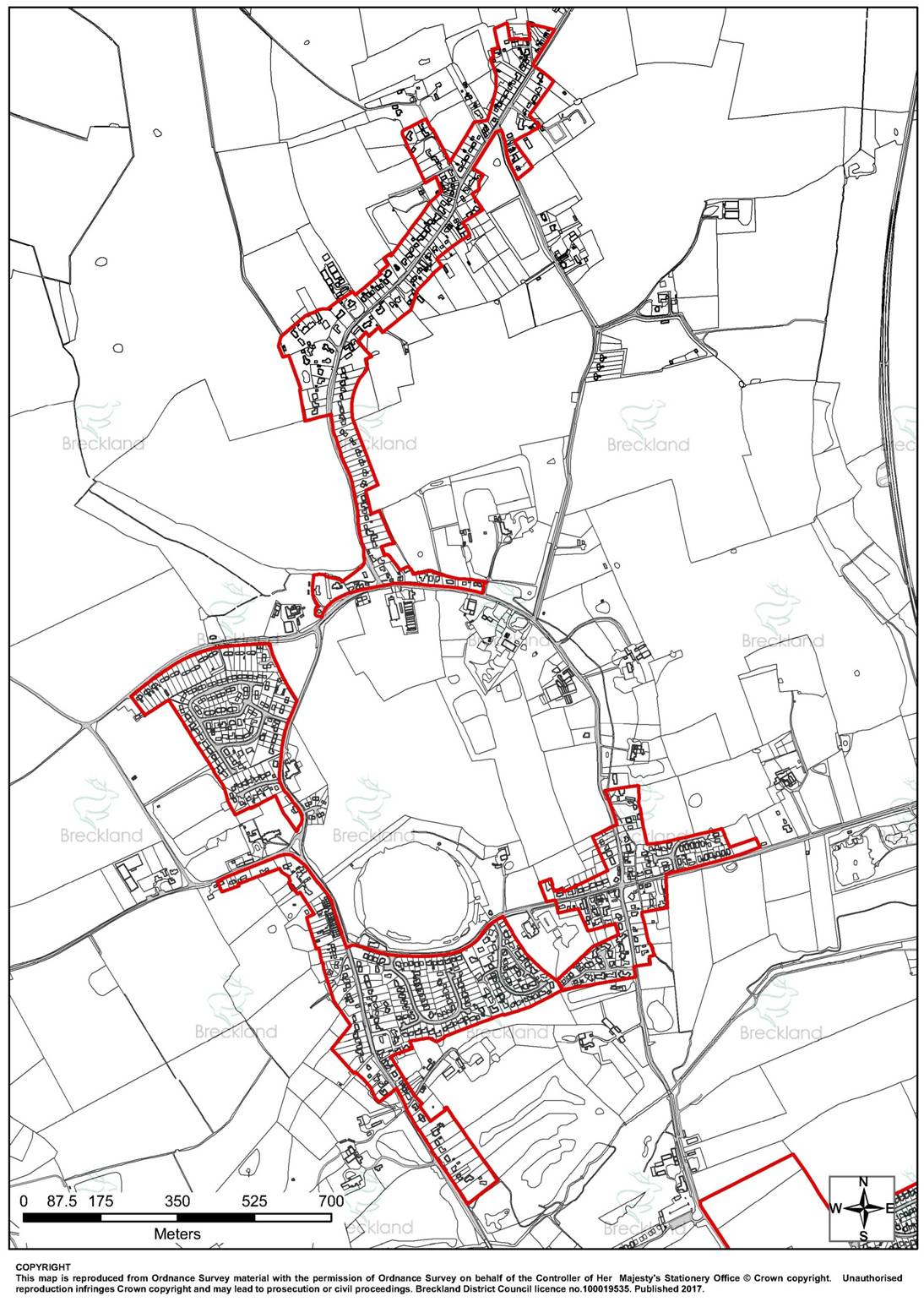|
PLANNING POLICIES THAT MAY BE REFERRED TO WHEN COMMENTING ON PLANNING APPLICATIONS
Planning applications and appeals are decided by assessing their compliance with relevant planning policies. At the highest level those are given by the National Planning Policy Framework, which you can find here On a day-to-day basis it is the policies of the Breckland Local Development Plan that are of greatest significance. For Saham Toney the two relevant documents in the Local Development Plan are the Breckland Local Plan and the Saham Toney Neighbourhood Plan (together with its supporting documents, which are known as "material considerations" in planning decisions, meaning they must also be considered when decisions are made). When reviewing applications and appeals we use the checklist below to see if they comply with the relevant policies of the Local and Saham Toney plans - provided in Microsoft WORD form for easy use. Whether a proposed site is inside the Saham Toney settlement boundary influences how some neighbourhood plan policies must be applied, so a copy of that map is also given below |
Policy Checklist
| stnp_policy_checklist_for_planning_reviews.docx |
Saham Toney Settlement Boundary Map
The National Planning Policy Framework, or NPPF (July 2018)
This is a set of high level national planning rules. You may see an application that references various paragraphs of the NPPF to justify it. Invariably the same application may contravene other paragraphs, but may keep quiet about that. To fully assess an application against the NPPF you'll need to read and become familiar with it. If you don't have time or inclination to do that we recommend at least reviewing whether an application complies with the following parts of the NPPF:
Paragraph 8: Is the development economically, socially and environmentally sustainable?
Paragraph 43: Has all the necessary information been submitted with the application?
Paragraphs 63 & 64: Have affordable homes been included in line with regulatory requirements?
Paragraphs 109 & 110: Does the application arise highway safety concerns?
Paragraphs 127 & 130: Is the proposed design acceptable?
Paragraphs 155-165: Is there a flood risk on, or because of the proposed site?
Paragraph 175: What impact would the development have on wildlife?
Paragraph 179: Are there any land contamination issues at the proposed site?
Paragraphs 189-192: Would the development have an undesirable impact on a listed building, site of archaeological interest or other heritage asset?
This is a set of high level national planning rules. You may see an application that references various paragraphs of the NPPF to justify it. Invariably the same application may contravene other paragraphs, but may keep quiet about that. To fully assess an application against the NPPF you'll need to read and become familiar with it. If you don't have time or inclination to do that we recommend at least reviewing whether an application complies with the following parts of the NPPF:
Paragraph 8: Is the development economically, socially and environmentally sustainable?
Paragraph 43: Has all the necessary information been submitted with the application?
Paragraphs 63 & 64: Have affordable homes been included in line with regulatory requirements?
Paragraphs 109 & 110: Does the application arise highway safety concerns?
Paragraphs 127 & 130: Is the proposed design acceptable?
Paragraphs 155-165: Is there a flood risk on, or because of the proposed site?
Paragraph 175: What impact would the development have on wildlife?
Paragraph 179: Are there any land contamination issues at the proposed site?
Paragraphs 189-192: Would the development have an undesirable impact on a listed building, site of archaeological interest or other heritage asset?
|
DOWNLOAD OR PRINT A PDF VERSION OF THIS TEXT
|
| ||
This document was superseded when the Breckland Local Plan was adopted in November 2019, and may now be disregarded.
We suggest checking an application for compliance with the following key policies of the Local Plan:
Policy HOU 04 requires any development that is not within a settlement boundary to be "immediately adjacent" to the settlement boundary". Even regardless of location this policy also requires all new developments to "provide a significant community benefit".
Policy TR01 requires development to "seek to minimise the need to travel". A site's location can be checked against the Government's maximum walking distance from services and public transport, which are set out below:
Policy HOU 04 requires any development that is not within a settlement boundary to be "immediately adjacent" to the settlement boundary". Even regardless of location this policy also requires all new developments to "provide a significant community benefit".
Policy TR01 requires development to "seek to minimise the need to travel". A site's location can be checked against the Government's maximum walking distance from services and public transport, which are set out below:
Policy ENV 05 requires development to "have regard to the findings of the Council's Landscape Character Assessment (LCA) and Settlement Fringe Landscape Assessment to ensure land is only released in areas where the impact on the landscape is minimal". As with Policy CP11 above, Breckland Council's own map showing that much of the parish is in an area of high sensitivity to development can be referred to in this context.
Policy ENV 09 requires development to "be located to minimise the risk of flooding" and that it would "not increase green field run-off rates and vulnerability of the site or the wider catchment, to flooding from surface water run-off from existing or predicted water flows".
Policy ENV 09 requires development to "be located to minimise the risk of flooding" and that it would "not increase green field run-off rates and vulnerability of the site or the wider catchment, to flooding from surface water run-off from existing or predicted water flows".
|
DOWNLOAD OR PRINT A PDF VERSION OF THIS TEXT
|
| ||
Having been "made" on 15 November 2021, the Plan carries full weight when planning applications and appeals are decided, and may be used by villagers and others who wish to comment on proposals.
We'd suggest you consider the following main points
We'd suggest you consider the following main points
|
DOWNLOAD OR PRINT A PDF VERSION OF THIS TEXT & IMAGE
|
| ||


